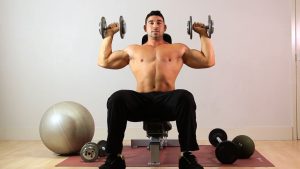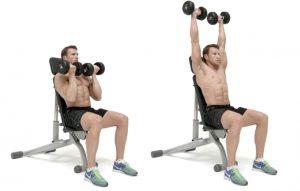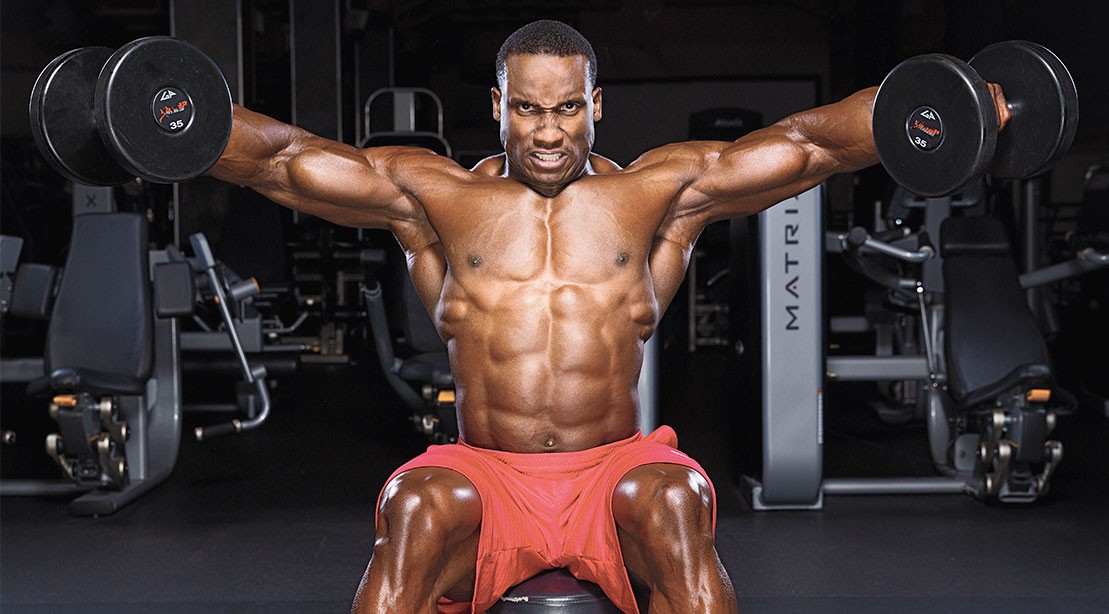The deltoid muscle consists of three beams: anterior, middle (lateral) and posterior. All of them, one way or another, participate in work with physical exercises or other workload. In some movements, the load accent is shifted to the front beam, in others – to the middle beam, and in the remaining movements the bulk of the work is performed by the back beam. It is this difference that determines the uniform development of deltas. For exercises that can focus on certain beams, first of all, isolation exercises (single-joint exercises) – dumbbell lifts in the standing (tilted) side, lifting press dumbbells in front of you, pulling the hand to the side (in front of it) with the bottom block. When the variant is executed, when the arm with the dumbbell (block) is withdrawn before itself, the target load gets to the front beam, but if the hand is moved to the side, the middle beam is accentuated, and the dumbbell dilution in the sides in the slope basically involves the rear beam.
Of course, isolation movements are important first of all for the targeted development of a specific part of the deltoid muscle, but still in order to build really large and powerful shoulders, multi-joint exercises are necessary – barbell or dumbbell presses. Zhim actively uses all three bundles and effectively stimulates muscle growth. Today we will talk about two types of press dumbbells, which, despite some similarity, provide a different load and uniquely develop deltas.
The dumbbell press sitting (palms all the time “look” forward).

Press of Arnold.
Exercise was put into practice by 7-fold Mr. Olympia Arnold Schwarzenegger. In the “golden era of bodybuilding,” when in bodybuilding there was still a lot of Arnoldana’s research wrestling, almost every seriously trained athlete could become a pioneer in anything. It was at that time that many exercises appeared, which over the years became the fundamental basis in athleticism.

If we compare these variants of dumbbell presses, the usual bench press is for intensive deltoid muscle training, and the Arnold bench press is a more formative exercise with an emphasis on the front and middle bundles of deltas. These two exercises should not be performed on one shoulder training, only one of them should be present in the complex on a certain day. Since the usual press of press dumbbells is purely power, the best option is to perform it in the singular as a multi-joint exercise on the shoulders, followed by dilutions with press dumbbells or a block. But it’s better to put the Arnold bench press on the next day after the bar press from the chest or from behind the head, in order to qualitatively work and feel the deltoid.
In both types of bench presses, it is necessary to keep the back straight to remove the negative load from the spine, and use a weightlifting belt. Any exercise works better, and the result will be long-term, if it is possible to protect yourself from any overload as much as possible and to carry out the movement technically correctly.

